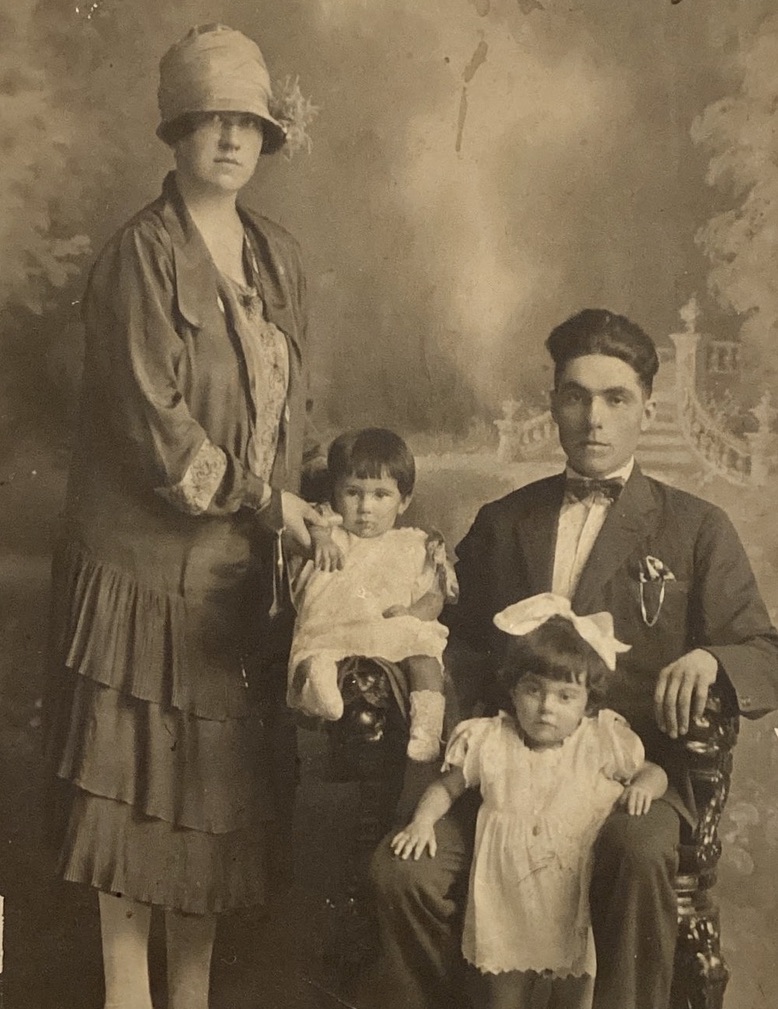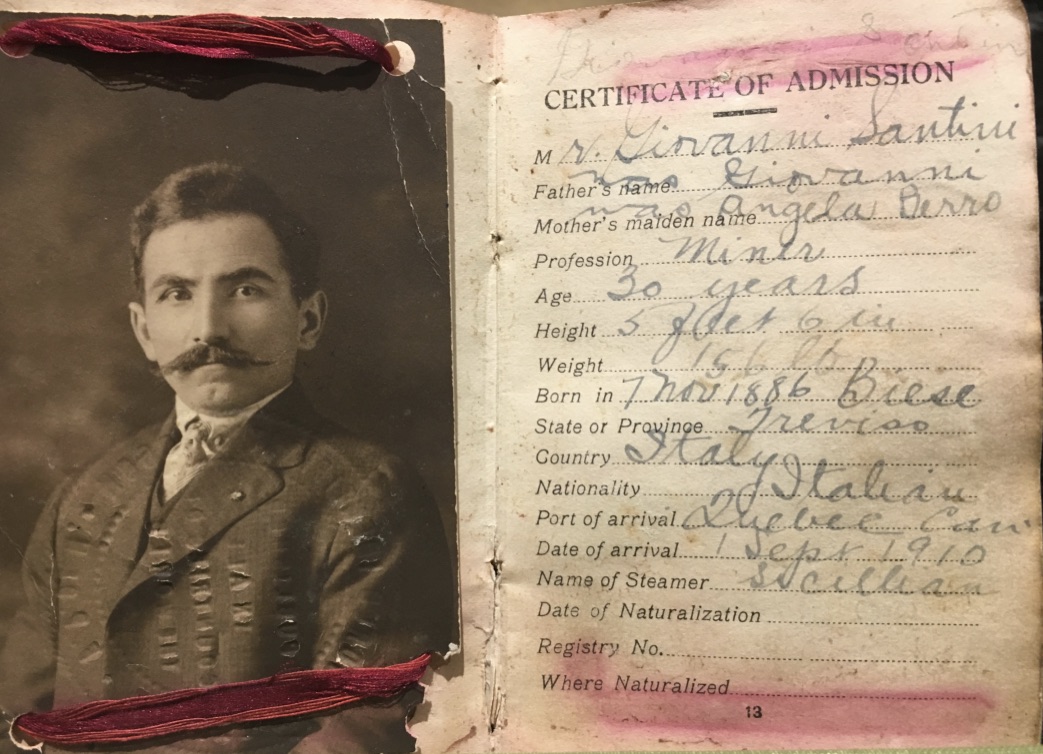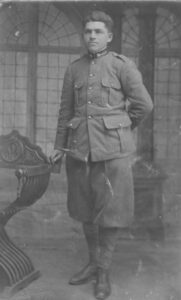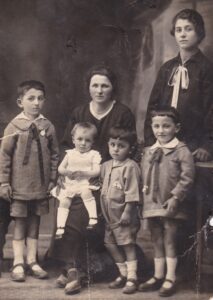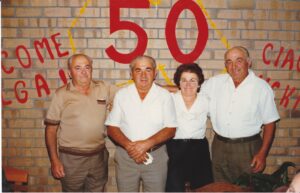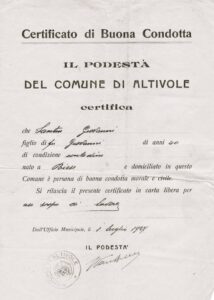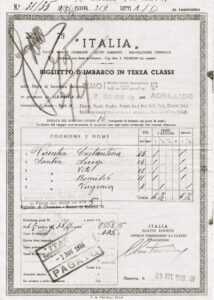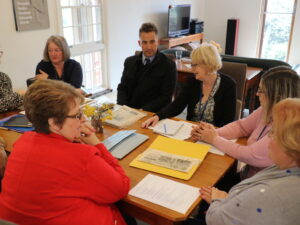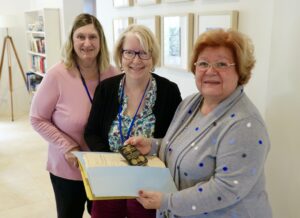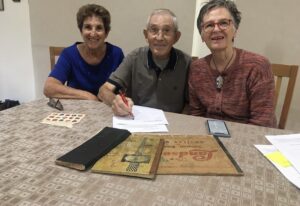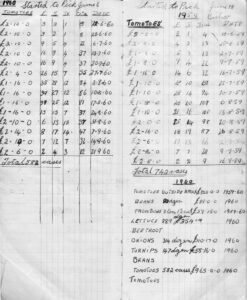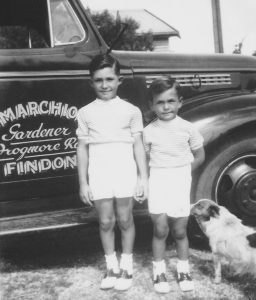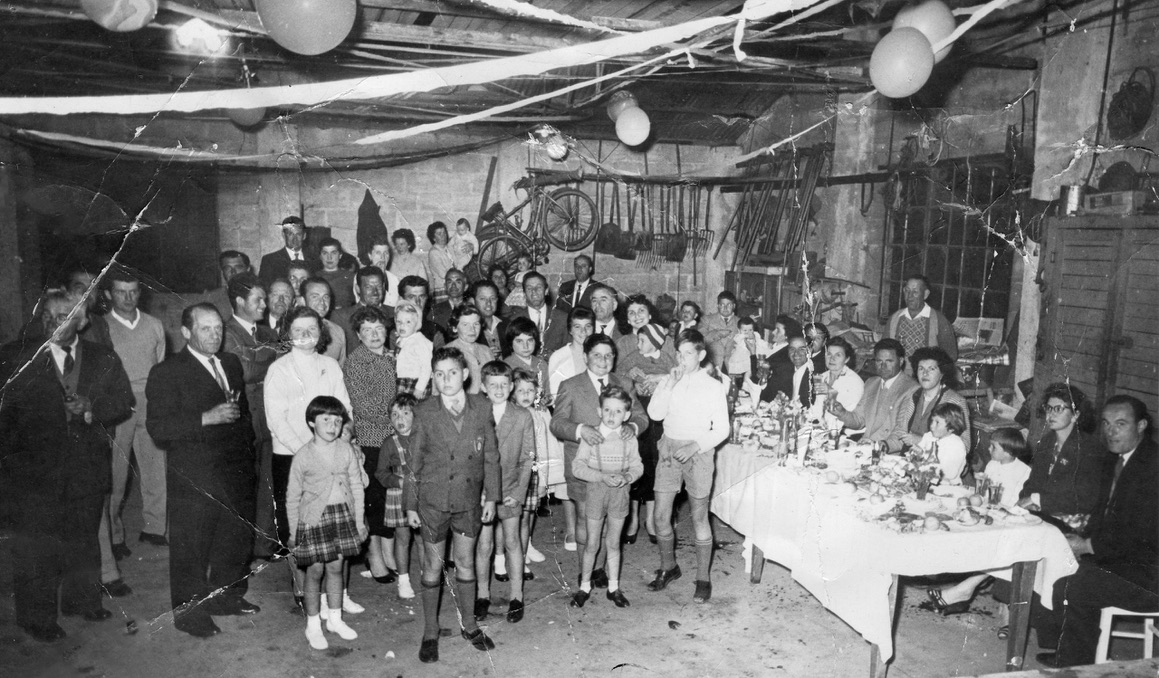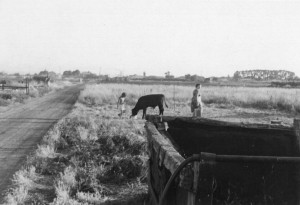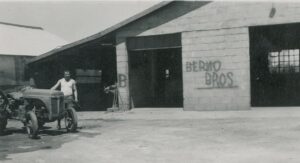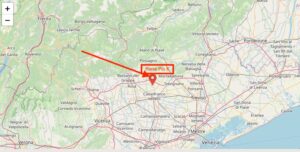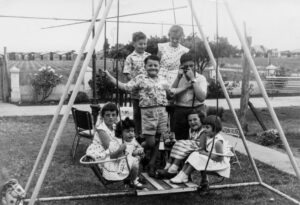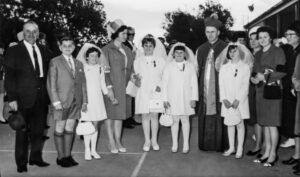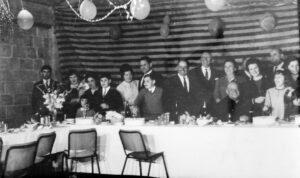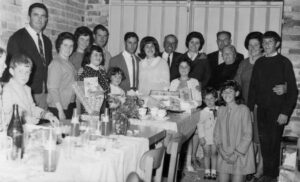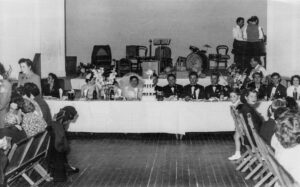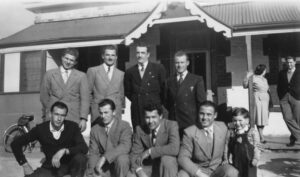In the portrait above, Francesco and Margherita Marchioro pose with their elder two daughters, Lina and Mary, Adelaide, 1927-1928.
Photo, courtesy Connie Legovich nee Marchioro.
Between March 1926 and January 1928, nineteen adults and a baby arrived in Adelaide from the Veneto region to begin a new life as migrants in a country that was facing difficult economic times. All but three became market gardeners during the 1930s in the area the veneti called Lockleys. They formed a close community and created a paese or village within about three kilometres of each other. Today, the Veneto market gardener community has many descendants and links that have spread across Australia, to Italy and Canada. In this blog, the individuals who arrived in the late 1920s are listed in order of their arrival.
The National Archives of Australia holds some passport photos, and other photos used in the blog have been provided by family members.
The first of the Veneto market gardener group arrived in Adelaide in 1926. Francesco Marchioro and Margherita Marchioro, were the only married couple in the group. They left Malo in the province of Vicenza with their baby daughter, Mary. Francesco was 25 years old, Margherita, 21 years and Mary was about 18 months. Lina was born the year after their arrival, and Connie, eleven years later. The couple had been sponsored by Margherita’s brother, Florindo.
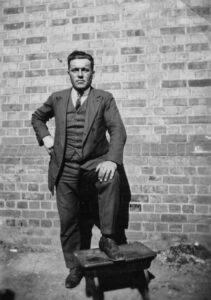
Domenico Rossetto, aged 32 years, arrived on 31 May 1926 from Bigolino. Domenico’s wife, Carmela and daughter, Anna, arrived in 1929. A son, Modesto was born in 1931. He was the first of eight Rossetto siblings to emigrate to Australia while just one son remained in Bigolino with his parents. Domenico sponsored three brothers and a brother-in-law in 1927. Domenico and Carmela owned a grocery shop in the east end of the city and served the Italian community.
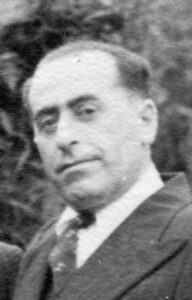
Alberto Berno arrived in Adelaide in January 1927 from Riese and joined his brother, Fedele who had been in Australia since 1925. Fedele returned to Italy in about 1935. Alberto was 17 years old and worked in partnership with his brother, Pietro. In 1950 married Elvira Carraro in 1950 and they had two children, Johnny and Marisa. The family returned to Riese Pio X in 1969. A fourth Berno brother, Albino, arrived in 1938, married Norma Gallina in Italy after the war and they had three children in Adelaide, Pia, Mary and Lino. A sister, Maria, also migrated to Australia and lived with her husband in Queensland.
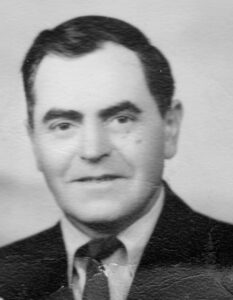
In April 1927, Eugenio Zalunardo arrived as 17 year old from Fansolo. He was the only member of his family to migrate to Australia. He married Luigia Ballestrin in 1943 and they had two children, Noemi and Renato.
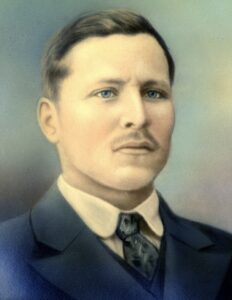
On 31 July 1927 Brunone Rebuli was 34 years when he arrived with three Rossetto brothers-in-law from Bigolino. In 1931 Brunone sent for his wife, Giovanna Rossetto and their three children, Dorina, Albino and Elvio. The fourth child, Guido was born in Adelaide in 1938. Albino (Vito) married Antonietta Danieli and they had two children, Elena and Nello. Elvio (Shorty) married Milva Zampin and they had eight children, Bruna, Linda, Andrea, Stephanie, Bruno, David, Jenny and Tanya . Guido married Pam Vining and they had three daughters, Joanne, Leonie and Deanna.
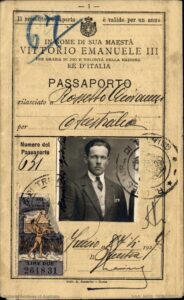
(Giovanni) Gelindo Rossetto was the eldest in the family and 32 years old on arrival. He had left his fiancée, Adele (Lina) Bordin in Italy. They married by proxy and Lina arrived in Adelaide in 1930. They had six children, three of whom died very young. Lena, Aldo and Silvano were born in Adelaide.
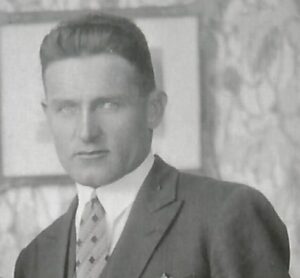
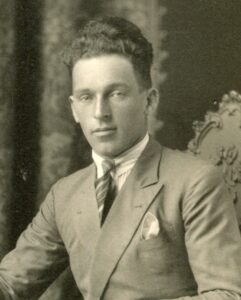
Adeodato (Atto) Rossetto was 27 years old when he arrived with his brothers and brother-in-law. Atto did not marry and worked on the wharves for most of his life and was part of the large Rossetto network in Adelaide.
Angelo Rossetto was 23 years old when he arrived with his brothers and brother-in-law. He returned to Bigolino for some years, married Maria Bolzonin and had three children, Luciana, Anita, John. Vivian was born in Australia. The family migrated to Australia in 1948 and moved to Melbourne were Angelo worked in hosiery manufacturing.
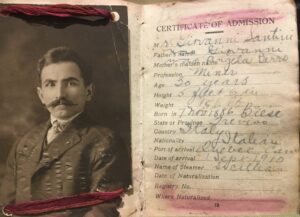
Giovanni Santin, from Caselle di Altivole arrived on 2 September 1927. He was the eldest of the Veneto men who arrived between 1926 and 1928. He was joined by his wife Costantina Visentin and children, Luigi, Vito, Romildo and Virginia in December 1935. Giovanni’s first wife, Maria Tessari died young and they had a daughter, Angelina. She came to Australia and joined her husband, Pietro Compostella with their three children, Giuseppe, Maria and Gino in 1947.
Luigi (Lui) married Rosina Tonellato and their children were Sandra,Denis, Johnny and Denise. Vito married Anna Mattiazzo and their son was Dean. Romildo (Nugget) married Clara Oliviero and they had three children, Diana, Allan and Lisa. Virginia married Oscar Mattiazzo and had three daughters, Christine, Helen and Vicki.
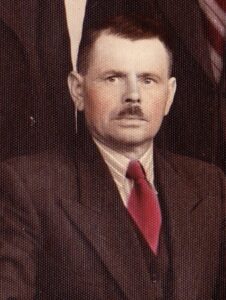
Secondo Tonellato, 34 years old, disembarked in Adelaide on 2 September 1927. He arrived with Giovanni Santin and records show that they lived on the same road in Caselle di Altivole. Secondo’s wife, Elisabetta and their five children, Lui, Rosina, Alberto, Lino and Orlando were reunited with him in June 1935. Assunta, niece of Secondo, joined the family in 1937 after her mother died soon after giving birth.
Lui married Italia Bergamin and had two children, Adrian and Luciana. Rosina married Lui Santin and their children were Sandra, Denis, Johnny and Denise. Albert married Mary Zoanetti and had four children, Linda, Raymond, Janet and Diana. Lino (Nino) married Rosanna Accatino and had two children, Terry and Steven. Orlando (Nano) married Lea Griguol and their children are Pauline, Sue, Chris, Paul and Leanne. Assunta married Angelo Giovannini.
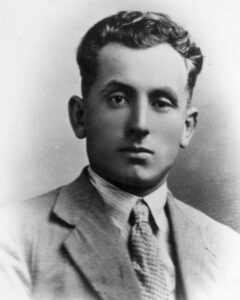
Angelo Piovesan, aged 22 years, from Ponzano Veneto arrived also on 2 September 1927 with Secondo and Giovanni and was known to the Tonellato family. Angelo married Rosalia Zanatta, his girlfriend, by proxy and she joined him in September 1934. Angelo’s brothers, Attilio and Mario also migrated to Adelaide. Attilio first arrived in 1937 and after returning to Ponzano Veneto, he married Claudina Mattiazzo and they arrived with their daughter, Edda in 1947 and spent some years in Adelaide. Mario and his wife Vittoria nee Teso migrated in January 1950 and their sons, Angelo, Renzo and John were born in Adelaide.
Two Ballestrin brothers and a cousin, from Vallà arrived together on 15 September 1927. Antonio was 25 years old.
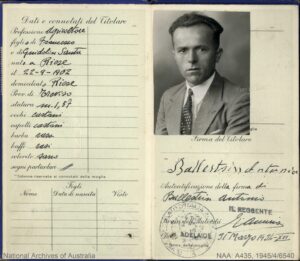
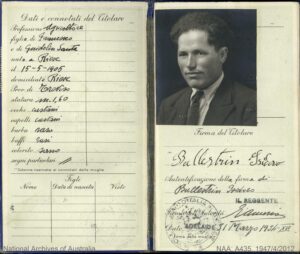
Isidoro was 22 years and their cousin, Giuseppe was just 17 years old. In 1934 they returned to Italy and married women who were adventurous enough to make their life in Australia. Antonio married Romilda Minato, Isidoro married Maria Gina Andreazza and they had three children, Santin, Frankie and Dolfina.
Giuseppe married Cesira Tieppo and their three children, Lino, Norma and Louis, were born in Adelaide.
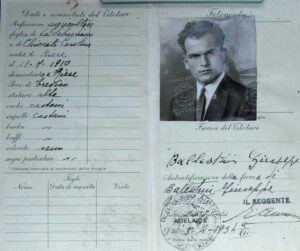
Other members of the Ballestrin families emigrated to Australia before World War II including Antonio and Isidoro’s mother, Santa Agata, their sister, Luigia. Their brother, Narciso arrived before his wife, Maria nee Dotto and son Egidio. Narciso and Maria’s three other children, Lina, Silvano and Norina were born in Adelaide.
Giusepppe’s brother Ermenegildo and sister Ida Maddalena also emigrated to Australia. Ermenegildo married Norina Berti and their sons, Ric and Angelo were born in Adelaide.
Eighteen-year-old cousins, Pietro and Gino Berno from Riese disembarked in Adelaide on 12 October 1927. Pietro worked in partnerhips with his brother, Albert. Pietro married Antonietta Pastro in Italy in 1948 and in Adelaide, they had three children, Roberto, Remo and Diana. The family returned to Riese Pio X in 1969. Gino Berno married Jean Dyson in 1933 and they had two children, Max and Lance. After divorcing, he married Irma Gomeriato.
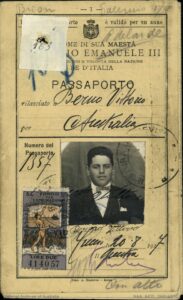
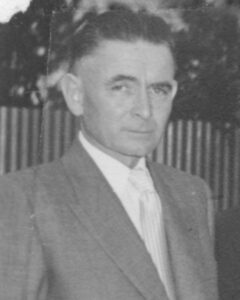
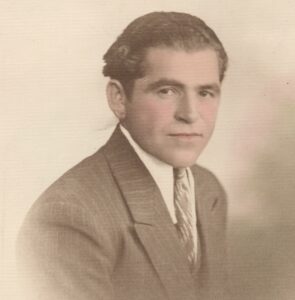
Vittorio Marchioro was 21 years old when he arrived in Adelaide from Malo on 17 December 1927. He was sponsored by his brother Francesco. He married Angelina Marchioro from Monte di Malo by proxy in 1937 and she joined him in January 1938. They had two children, Johnny and Romano.
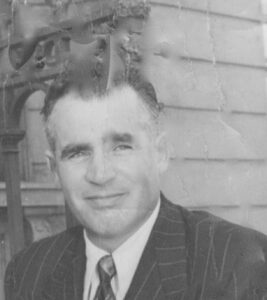
Silvano Zampin was 17 years old when he arrived from Riese on 17 January 1928. He had been sponsored by his brother Pietro who had arrived about two years earlier but was killed in an accident in 1930. Silvano married Amelia Katherine Shaw in 1931 and they had nine children, Milva, Bruna, Roma, Angela, Christina, Virginia, Sandra, Cynthia and Peter.
Australia is richer because of this group, and other migrants, who had the courage, vision and perseverance to begin a new life and raise families. The Veneto market gardener families and their community have made a significant contribution for many years.
Madeleine Regan
13 August 2023
